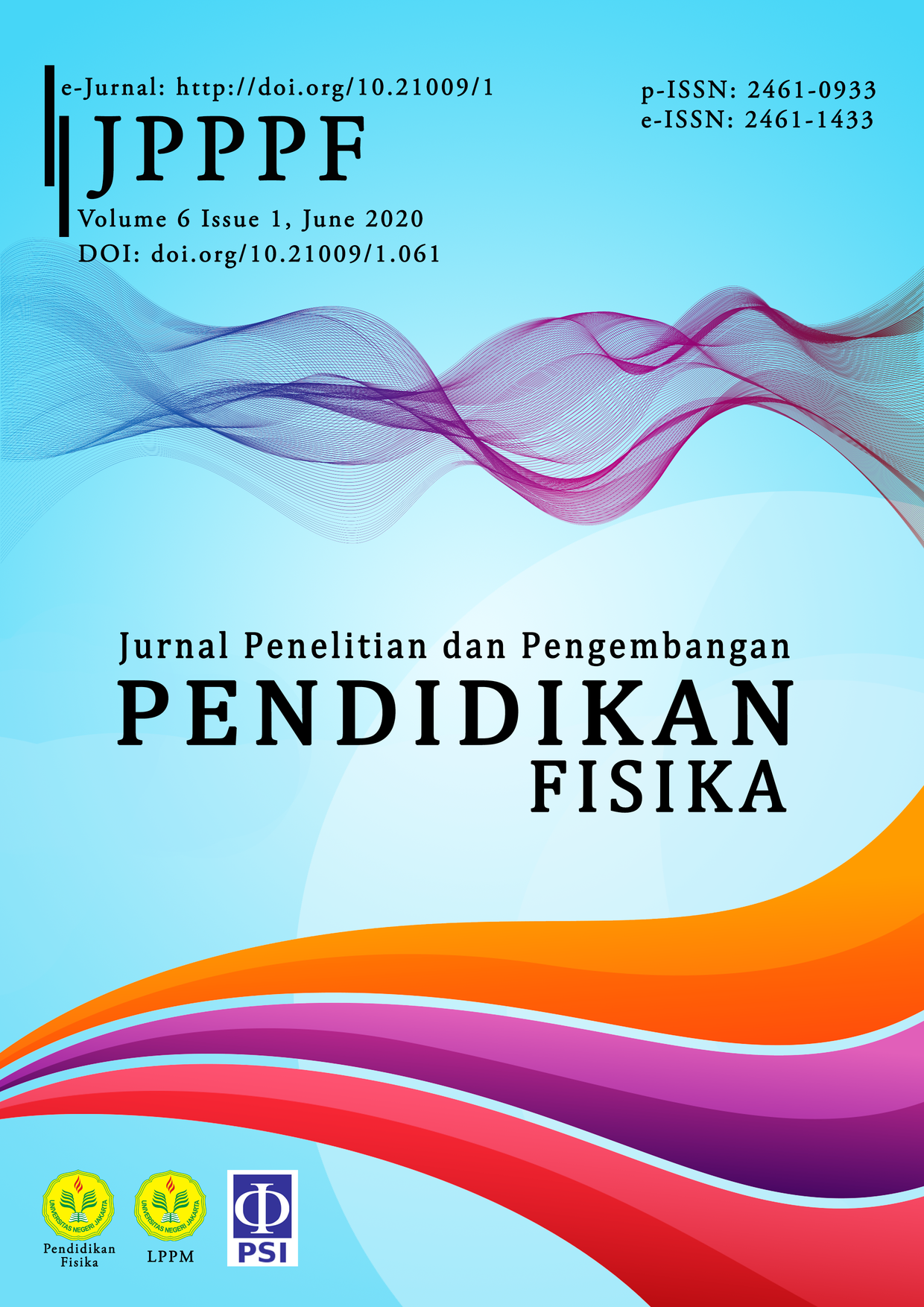An Investigation of Physics Teachers’ Multiple Representation Ability on Newton’s Law Concept
DOI:
https://doi.org/10.21009/1.06112Keywords:
multiple representations, pictorial diagrams, table representations, graphsAbstract
The ability of the teacher to represent a concept using various types of representation is a critical competency. Teachers who have limited multiple representation abilities will not be able to provide a holistic and appropriate learning experience because students have different abilities in constructing their knowledge. This study aims to determine the multiple representation ability of Physics teacher by using instruments to test multiple representations on the topic of Newton’s law consisting of text representations, images, pictorial diagrams, tables, graphs, and mathematical equations. The subjects in this study were 30 high school Physics teachers in North Maluku who were determined based on the purposive sampling technique. Data on multiple teacher representation abilities were analyzed using descriptive statistics. The results of the data analysis showed that the multi-representation ability of high school physics teachers in Newton’s law concept was in the medium category (55.7%) with the highest achievement occurring in the type of mathematical representation and the lowest in the pictorial diagram representation types for both female and male teachers. Besides, based on data implemented using SPSS 2.0, it can be concluded that there are no significant differences with the ability of teacher’s multi-representation based on gender and teacher’s teaching experience.
References
Boey, PL, Maniam, GP, & Abd Hamid, S. 2011. ‘Performance of Calcium Oxide as a Heterogeneous Catalyst in Biodiesel Production: a Review’. Chemical engineering journal, 168(1), 15-22.
Buasri, A, Chaiyut, N, Loryuenyong, V, Worawanitchaphong, P, & Trongyong, S. 2013. ‘Calcium Oxide Derived from Waste Shells of Mussel, Cockle, and Scallop as the Heterogeneous Catalyst for Biodiesel Production’. The Scientific World Journal, 2013.
Lengyel, J, Cvengrošová, Z, & Cvengroš, J. 2009. ‘Transesterification of Triacylglycerols over Calcium Oxide as Heterogeneous Catalyst’. Petroleum & coal, 51(3), 216-224.
Novia, N, Yuliyati, H, & Yuliandhika, R. 2009. ‘Pemanfaatan Biji Karet sebagai Semi Drying Oil dengan Metode Ekstraksi Menggunakan Pelarut N-Heksana’. Jurnal Teknik Kimia, 16(4).
Onoji, SE, Iyuke, SE, & Igbafe, AI. 2016. ‘Hevea brasiliensis (Rubber Seed) Oil: Extraction, Characterization, and Kinetics of Thermo-Oxidative Degradation Using Classical Chemical Methods’. Energy & Fuels, 30(12), 10555-10567.
Ramadhas, AS, Jayaraj, S, & Muraleedharan, C. 2005. ‘Biodiesel Production from High FFA Rubber Seed Oil’. Fuel, 84(4), 335-340.
Sulaiman, S, Shah, B, & Jamal, P. 2017. ‘Production of Biodiesel from Palm Oil Using Chemically Treated Fish Bone Catalyst’. CHEMICAL ENGINEERING, 56.
Van Gerpen, J. 2005. ‘Biodiesel Processing and Production”. Fuel processing technology, 86(10), 1097-1107.
Wei, Z, Xu, C, & Li, B. 2009. ‘Application of Waste Eggshell as Low-Cost Solid Catalyst for Biodiesel Production’. Bioresource technology, 100(11), 2883-2885.
Yuliani, F, Primasari, M, Rachmaniah, O, Rachimoellah, M, Biomassa, L, & Kimia, JT. 2013. ‘Pengaruh Katalis Asam (H2SO4) dan Suhu Reaksi pada Reaksi Esterifikasi Minyak Biji Karet (Hevea brasiliensis) menjadi Biodiesel’. Skripsi Sarjana, Fakultas Teknologi Industri ITS. Surabaya. Hal, 1-2.











